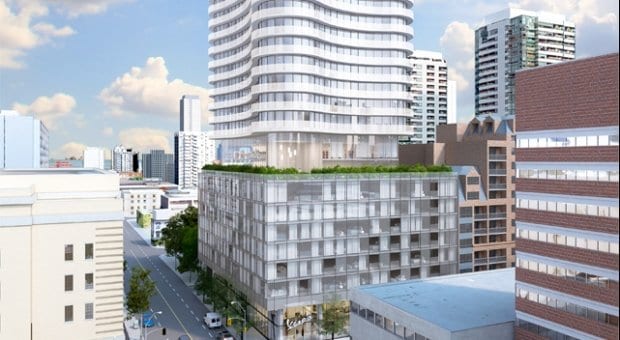Construction cranes have become a familiar sight in the skylines bordering the Village.
The area north of Gloucester Street has seen a tremendous amount of development in the last five years. At Isabella and Church streets, large mounds of overturned earth surround an extension that is being built on an existing rental property – a 23-storey tower that will create an additional 211 residential units.
Less than a block north, on Charles Street East, there are no fewer than four high-rise condo projects in various states of construction, including the Casa II and III (56 storeys each), the Chaz Yorkville (47 storeys) and the X2 (49 storeys), all of which are within a stone’s throw of a 75-storey complex going up at the corner of Bloor and Yonge streets.
None of this should be particularly surprising. In a study released by German data company Emporis last fall, Toronto was named the condominium capital of North America, with the largest number of high-rises and skyscrapers currently under construction – 147 construction sites – and twice as many as its nearest competitor, New York City. And between 2007 and 2011, a whopping 151,900 residential units were proposed in the city, with 62,647 completed. Of those, 78 percent are condominiums.
Ward 27, home to the Church-Wellesley Village and a key transit and commercial hub in the city, is considered a prime area for redevelopment. Still, for all the glass towers sprouting up within close proximity of the strip, construction in the Village itself is surprisingly conservative.
“The development along Church is actually modest compared to some of the other neighbourhoods,” says Councillor Kristyn Wong-Tam. “There are 26 applications currently in progress along Yonge and a few popping up along Jarvis, but construction in the neighbourhood itself tends to be quiet.”
One of the biggest concerns for Village residents is that queer businesses and historic properties will be displaced or demolished as a result of the new developments. In 2011, the community came together to fight a proposal to tear down some of the heritage properties located along Church (between Dundonald and Isabella streets) and replace them with a 25-storey condominium complex. After a series of protracted public arguments with neighbourhood residents’ groups and city planners, the property owner eventually withdrew plans for the development.
But the city planning department continues to receive applications proposing new developments, some of which involve contentious sites. A planned 34-storey condo tower at Gloucester and Yonge streets will force the closure of Village staples Fly and Fire on the East Side, while the recently announced 38-storey complex at Carlton and Church will replace the building that houses Zipperz nightclub.
Change is both inevitable and happening all over the city, Wong-Tam argues, but “there needs to be a coherent vision for the neighbourhood and an open and reciprocal dialogue between the city, residents’ associations and the BIA.
“How the community leads the change is just as important as the roles of the city and the developers. [The Village] has a lot to offer in terms of human-scale retail and intimate patios. They have to see these changes as an opportunity.”
Check out Xtra‘s five-part series about Toronto’s changing gay village.
Ward 27 Population Boom
5,975 units in 11 proposed condominiums with confirmed unit numbers, factoring in two people per unit – that’s approximately 11,950 new tenants in Ward 27 within the next three years.
2001: 21,885
2006: 24,355
2011: 28,365
2016 (projected): 40,315
*Based on the City of Toronto Neighbourhood Profile for the Church-Yonge Corridor, published in 2011

 Why you can trust Xtra
Why you can trust Xtra


